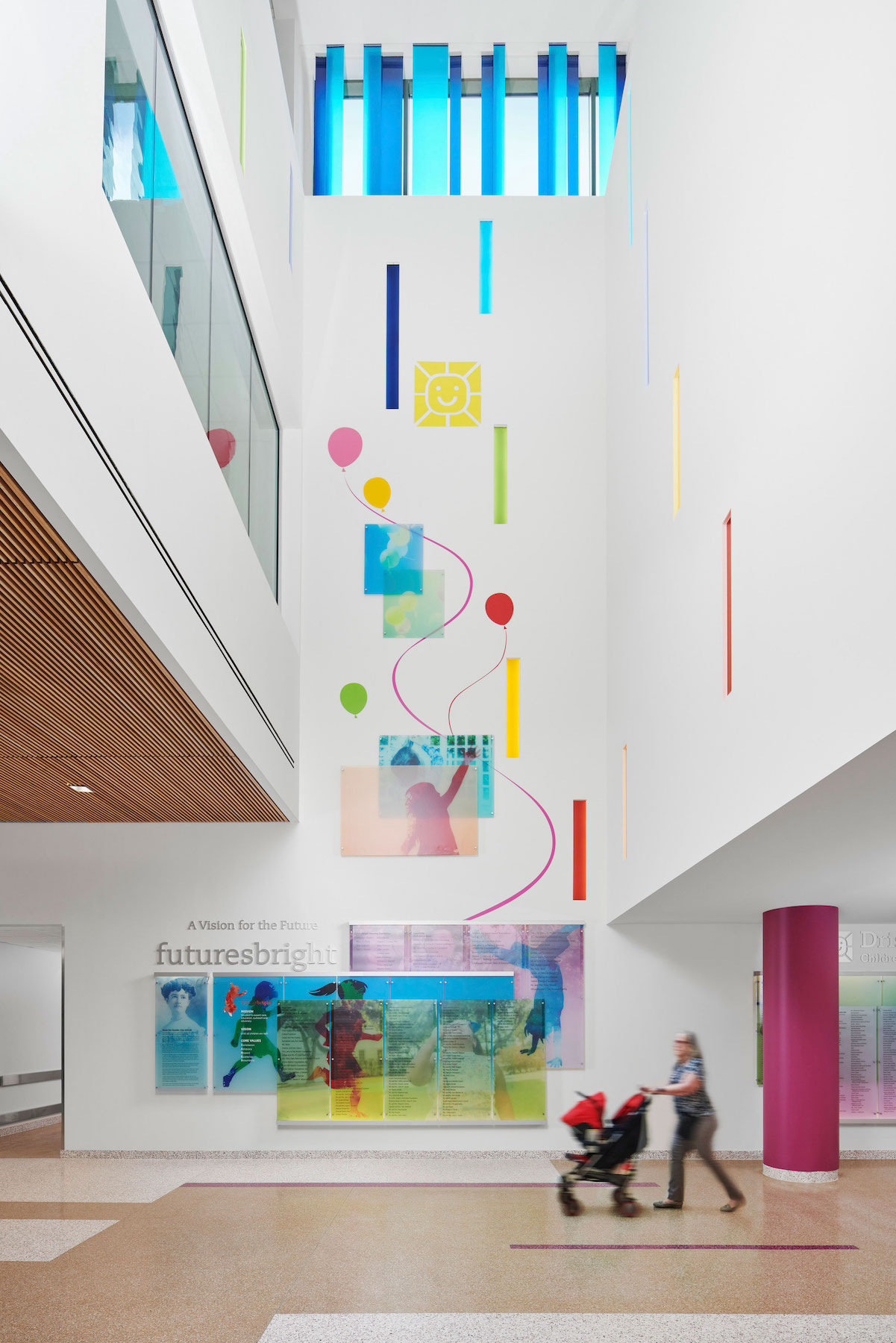Page and EYP announced that they have successfully closed a transaction that integrates the two design firms. Guided by similar values and culture, they will expand their services and geographic reach, working seamlessly across offices and disciplines. Together as one firm they will combine exceptional design rooted in architectural, engineering and consulting capabilities to make lives better.
“Bringing together our two firms allows us to work on increasingly complex projects that benefit from our expertise across disciplines and market sectors,” stated Thomas McCarthy, Page Chief Executive Officer. “Together, we’re bringing the most compelling, innovative designs and expertise to each project we pursue regardless of scope or location, and we’ll be able to invest in research and thought leadership to co-create with our clients.”
With a diverse, international portfolio—encompassing the academic; aviation; civic, community and culture; corporate and commercial; government; healthcare; housing and hospitality; industrial; life sciences; and science and technology sectors—the integrated firm of designers, architects and engineers will deliver high-performance designs that help clients measure, reduce, and offset carbon emissions. In addition, the firm will continue to promote equity and wellness with teams versed in practices like universal design, Design for Freedom, Well, Fitwel, and other strategies contributing to diversity and inclusion.
“Page and EYP both create designs that enhance people’s lives and communities,” stated Kef Mason, who served as interim chief executive officer at EYP, and has agreed to stay on with Page. “Combining our expertise is a winning formula for our clients and our employees. It offers us the ability to provide growth, mentorship, and training for our employees that translates to cutting-edge design in our projects. This agreement supports the natural growth trajectories and strategic vision for both firms by unifying our efforts to benefit our clients and staff.”
A spokesperson for Page says that EYP will operate as Page, but that the company is also exploring branding options that capitalize on the strengths of both firms.
In an unanimous decision by Page’s Board, Page submitted a successful bid for EYP’s assets on June 22. The combined firm will have more than 1,300 employees across the U.S., Latin America, and the Middle East.
BOTH FIRMS STRONG IN HEALTHCARE SECTOR

In April, EYP, with $149 million in liabilities, sought Chapter 11 bankruptcy protection from its creditors. The Albany, N.Y.-based firm reportedly had a $67.7 million “stalking horse” bid for its assets from the private equity firm Ault Alliance, according to Reuters and the Albany Times Union.
Last year, EYP, which was founded in 1972, generated $126.5 million in revenue, nearly $67 million of which came from healthcare design projects according to information provided by EYP for BD+C's annual GIANTS ranking. In 2021, EYP launched a sustainable landscape design practice, and opened an office in Orlando, Fla., its 11th.
Page, based in Houston, generated a total of $226.9 million in revenue in 2021, with $61.2 million coming from hospital design projects, and another $42.2 million from core-and-shell office building design. Over the past five years, Page has been working toward a goal of “Page/One,” with systems, processes, and procedures that allow the firm to deliver integrated designs that leverage firmwide capabilities. (Nearly $80 million of Page's revenue last year came from engineering services it provided.)
[Editor's note: Information about EYP's bankruptcy filing and the two firms' revenues was added after this story was posted.]
Related Stories
| Nov 3, 2010
Dining center cooks up LEED Platinum rating
Students at Bowling Green State University in Ohio will be eating in a new LEED Platinum multiuse dining center next fall. The 30,000-sf McDonald Dining Center will have a 700-seat main dining room, a quick-service restaurant, retail space, and multiple areas for students to gather inside and out, including a fire pit and several patios—one of them on the rooftop.
| Nov 2, 2010
11 Tips for Breathing New Life into Old Office Spaces
A slowdown in new construction has firms focusing on office reconstruction and interior renovations. Three experts from Hixson Architecture Engineering Interiors offer 11 tips for office renovation success. Tip #1: Check the landscaping.
| Nov 2, 2010
Cypress Siding Helps Nature Center Look its Part
The Trinity River Audubon Center, which sits within a 6,000-acre forest just outside Dallas, utilizes sustainable materials that help the $12.5 million nature center fit its wooded setting and put it on a path to earning LEED Gold.
| Nov 2, 2010
A Look Back at the Navy’s First LEED Gold
Building Design+Construction takes a retrospective tour of a pace-setting LEED project.
| Nov 2, 2010
Wind Power, Windy City-style
Building-integrated wind turbines lend a futuristic look to a parking structure in Chicago’s trendy River North neighborhood. Only time will tell how much power the wind devices will generate.
| Nov 2, 2010
Energy Analysis No Longer a Luxury
Back in the halcyon days of 2006, energy analysis of building design and performance was a luxury. Sure, many forward-thinking AEC firms ran their designs through services such as Autodesk’s Green Building Studio and IES’s Virtual Environment, and some facility managers used Honeywell’s Energy Manager and other monitoring software. Today, however, knowing exactly how much energy your building will produce and use is survival of the fittest as energy costs and green design requirements demand precision.
| Nov 2, 2010
Yudelson: ‘If It Doesn’t Perform, It Can’t Be Green’
Jerry Yudelson, prolific author and veteran green building expert, challenges Building Teams to think big when it comes to controlling energy use and reducing carbon emissions in buildings.
| Nov 2, 2010
Historic changes to commercial building energy codes drive energy efficiency, emissions reductions
Revisions to the commercial section of the 2012 International Energy Conservation Code (IECC) represent the largest single-step efficiency increase in the history of the national, model energy. The changes mean that new and renovated buildings constructed in jurisdictions that follow the 2012 IECC will use 30% less energy than those built to current standards.
| Nov 1, 2010
Sustainable, mixed-income housing to revitalize community
The $41 million Arlington Grove mixed-use development in St. Louis is viewed as a major step in revitalizing the community. Developed by McCormack Baron Salazar with KAI Design & Build (architect, MEP, GC), the project will add 112 new and renovated mixed-income rental units (market rate, low-income, and public housing) totaling 162,000 sf, plus 5,000 sf of commercial/retail space.
| Nov 1, 2010
John Pearce: First thing I tell designers: Do your homework!
John Pearce, FAIA, University Architect at Duke University, Durham, N.C., tells BD+C’s Robert Cassidy about the school’s construction plans and sustainability efforts, how to land work at Duke, and why he’s proceeding with caution when it comes to BIM.
















